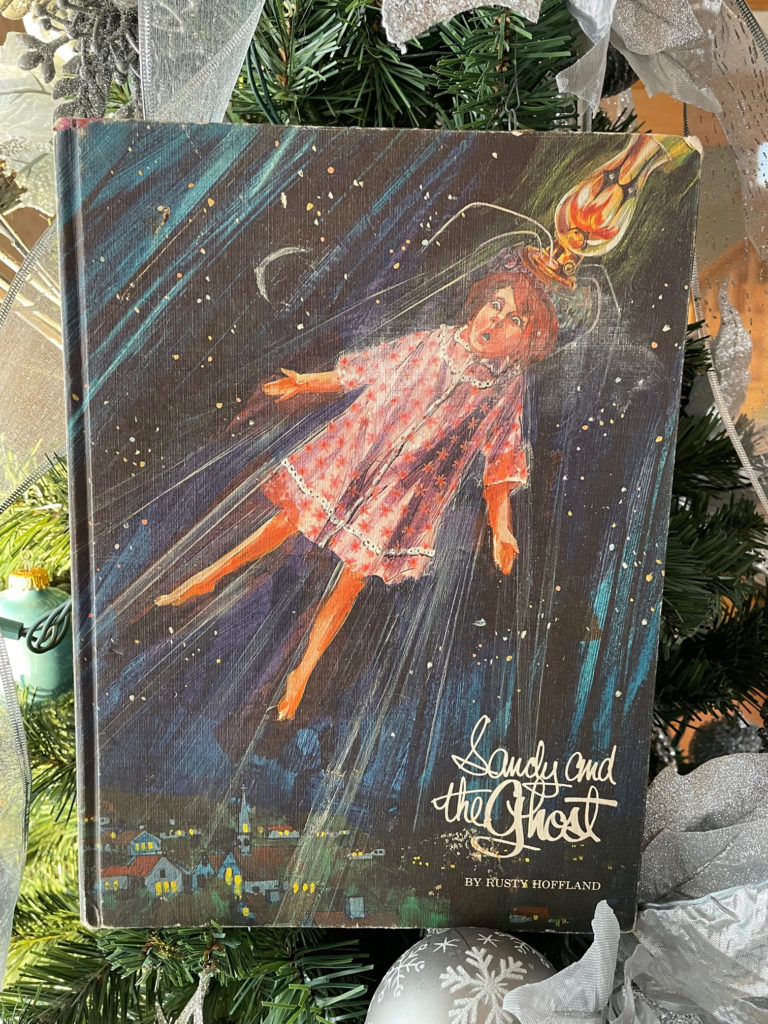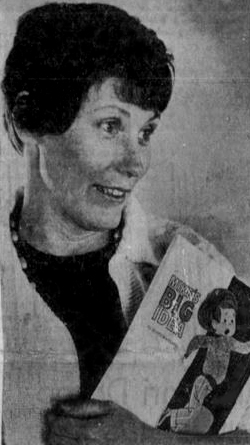
BY KRIS LEONHARDT
ACTING EDITOR
GREEN BAY – The story of Rudolph the Red-Nosed Reindeer first appeared in a booklet written for an advertising campaign for the department store chain, Montgomery Ward, in 1939. The store had been purchasing and giving away coloring books and decided to create their own in-house, thus began the legacy of the well-known reindeer.
As a common means for promotion in the 20th century, books and pamphlets also became an educational vehicle for companies as well as a means for entertainment or reward.
Many of these products were produced through the 1960s and early 1970s, two authored by a Wisconsin housewife.
Author Melba “Rusty” Hoffland was a mother of six children who wrote for Wisconsin newspapers and produced a syndicated column, “Looking at it this Way.”

In 1966, she told the Wisconsin State Journal that she enjoyed writing children’s stories and pieces about family life, but found it difficult because she was “an atrocious speller and writing is real agony for me because of it. I spend half my time looking up words and it’s a terrible bore, but it’s worth it.”
Still, she managed to churn out stories for publication, as well as a marketing product for Wisconsin credit unions called “Mike’s Big Idea,” published in 1965.
In the story, the lead character, named after her son Michael, accidentally breaks his piggy bank and learns of a better way to save.
The book, published by Hagen Advertising, was designed to explain to grade school children how a credit union operates and was distributed by credit unions throughout the state.
Sandy and the Ghost
Engineers first harnessed the energy at Niagara Falls to generate electricity in 1896, and the first long-distance transmission – a 69.000-volt line strung on steel towers – between Northern Hydro Electric Company’s High Falls hydro plant and Green Bay was completed in 1910.
The state looked to introduce hydroelectric power stations using local rivers, but the expense made it difficult for private companies to pursue.
In 1935, President Franklin Roosevelt established the Rural Electrification Administration (REA) as part of a program for unemployment relief.
The government then encouraged the creation of cooperative organizations to help develop their electrical infrastructure and it caught on quickly.
By 1945, Wisconsin’s last cooperative was organized and electricity became a state-wide utility available to all.
By the 1960s, life without electrical power had become a thing of the past.
That is when the Wisconsin Electric Cooperative, now the Wisconsin Electric Cooperative Association, set out to educate youth on what was like during the “Cold Dark Time.”
Through “Sandy and the Ghost,” Hoffland tells the story of Sandy, named after her daughter Sandra, and her journey to the past in a Dickensesque tale written for kids ages six to 12.
Through Hoffland’s writing, young readers learn about the challenges before the introduction of electricity in an “A Christmas Carol”-like manner.
The book was published in 1967 by the Wisconsin Electric Cooperative and distributed by local cooperatives around the state.
The book served as a staple in local households in the 1960s and 1970s for generations wanting to illustrate for their children and grandchildren how electricity has improved their livelihood.
Hoffland later became the director of creativity at an advertising agency before moving to Atlanta in 1974 to work as a writer and advertising executive. She passed away from lung cancer in June 1996.
